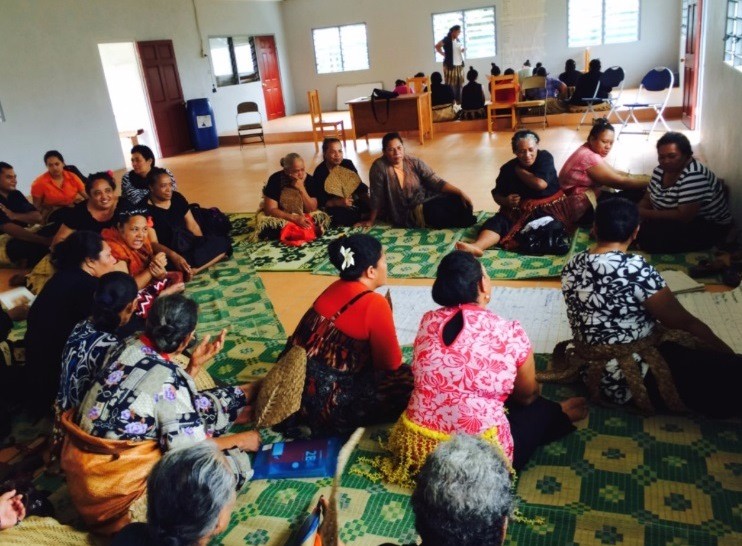Why social research is important in establishing sustainable development projects?
By: Dr Lila Singh-Peterson, Research Fellow, USC Queensland
I would like to take a few moments to explain why I think the role of social researchers in development projects is critically important. Firstly let me say that I am a social researcher, and I have been involved in ACIAR projects for the last few years, and in community development projects for far longer. In this blog (my first blog) I would like to reflect on my experiences co-developing a fruit project in Tonga. At this point in time, our multidisciplinary research team is working closely with in-country partners and communities to establish a citrus orchard around two school sites on the island of `Eua. The project has the potential to leverage substantial livelihood benefits for the two communities involved.
I was heavily involved in the formation of this project which was designed to align with the sustainable livelihoods framework. In this framework, projects are co-designed and implemented with the intended beneficiaries of the project, and with the ongoing support and collaboration of existing non-government and government bodies. The institutional element in the framework (organisations and agreements between organisations) is very important in making livelihood assets and resources (including skills and knowledge) available locally – so that the intended beneficiaries are enabled to develop their livelihood strategies. In practise, this meant that it was very important to strategically identify who the intended beneficiaries were (vulnerable communities facing hardships), who the stakeholders are (current and prospective), and their capacity to access resources and skills. In Tonga, discussions with multiple stakeholders identified where institutional objectives overlapped or complimented, and so natural partnerships emerged. The existing local governance structure also supported the involvement of elected local leaders, and district level leaders who are able to navigate through local political systems. Building a community based project to align with local networks and points of influence is pivotal in bringing about sustainable project outcomes, and for realising capacity building opportunities for local partners who operate within this socio-political context.

Picture 1 Planning workshop with community members.
It was also important to ensure that the benefits of a long-term project, like a fruit project, were directed back to the community who are immersed in all facets of the project. To do this, safe guards in relation to securing political will which lead to long term land tenure commitments exceeding the life of the project are important. Capacity building and skills development for community members is prioritised throughout the life of the project, to ensure participants can eventually lead the project, or replicate the project in time. As there is not currently a culture of fruit cultivation in Tonga, bridging this divide will take consistent effort and support from a multitude of partner organisations. Gender equity and resilience thinking concepts were also embedded in the communities’ project management strategies, in keeping with Australian foreign policy priority areas. All of these activities require strong networks and time in country, listening and responding to issues and suggestions.

Picture 2: Community members erecting a pig-proof fence around the planned site for the citrus orchard
Although this is a simplified account of work I have been involved in, I hope it provides a view of the benefit social research can bring to sustainable development initiatives once the biophysical and agribusiness criteria of an agriculture or horticulture project has been met. It would be much easier to simply work with semi-commercial farmers who have proven commitment, financial resources and business planning experience as many projects elect to do – but IMHO this alternative is not likely to achieve the same level of livelihood benefits for those facing hardships as the approach outlined above.

Picture 3: Current stock of `Eua citrus


